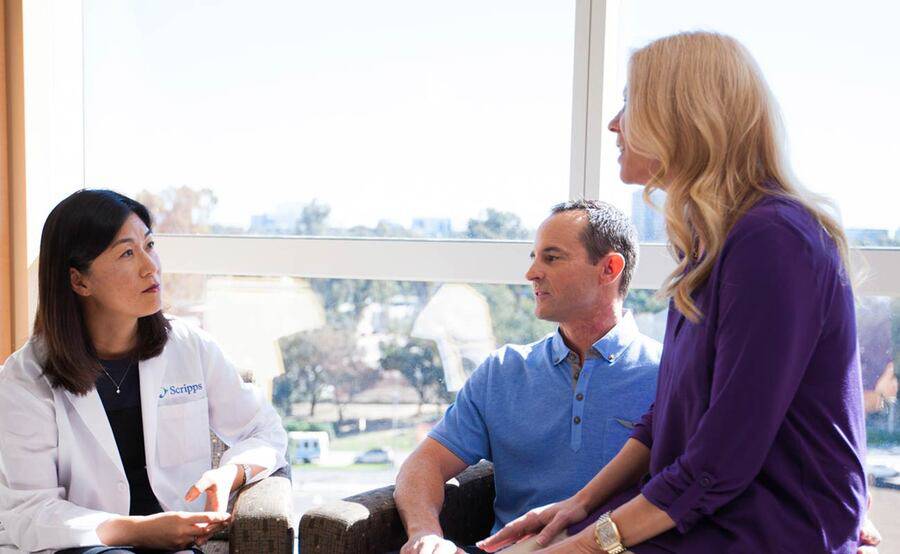Heart Disease
Scripps the leading provider of heart care in San Diego

Dr. Kiyon Chung, Cardiology, Scripps
Scripps the leading provider of heart care in San Diego
Heart disease is the number one cause of death among both men and women in the United States. According to the Centers for Disease Control, more than 600,000 people die of heart disease in the US every year, representing about one in every four deaths.
U.S. News & World Report has consistently ranked Scripps as one of America's Best Hospitals in the nation, and the best in San Diego, for cardiology and heart surgery.
How the heart works
- The heart is a hollow muscular organ that creates rhythmic contractions help pump blood throughout the body to deliver oxygen and nutrients.
- Each day, the average heart beats about 100,000 times. That’s equal to 35 million beats per year or 2.5 billion beats over 70 years.
- The heart has four chambers: two atria (top chambers) and two ventricles (lower chambers).
- Oxygen-depleted blood enters the heart’s right atrium, and then the right ventricle before being pumped to the lungs.
- Oxygen-rich blood from the lungs enters the left atrium, and then the left ventricle before being pumped to circulate throughout the body.
- The heart pumps the body’s entire blood supply (approximately 5 to 6 quarts) through the body in about one minute. That’s equal to almost 2,000 gallons pumped per day.
Types of heart disease
- Arrhythmias occur when the heart beats too quickly (up to four times the normal heart rate), too slowly (under 60 beats per minute) or erratically. There are several types of arrhythmias, based on where they originate in the heart.
- Coronary artery disease is the narrowing or blockage of the heart’s coronary arteries caused by buildup of calcified plaque from cholesterol deposits. The coronary arteries provide vital blood to support the heart muscle.
- Sudden cardiac arrest happens when electrical impulses controlling the heart’s rhythm fail and the heart stops. Sudden cardiac arrest can occur without warning in otherwise healthy people with no history of heart disease. Re-establishing the heartbeat is critical to save a life and minimize damage to the heart and brain.
- Cardiomyopathy is when the heart muscle becomes enlarged or its walls become thick or rigid, which can cause pumping problems and lead to arrhythmia or heart failure.
- Heart failure is a chronic heart condition in which the heart becomes weakened and no longer can pump enough oxygen-rich blood to the body. Not to be confused with heart attack, heart failure can be caused by coronary artery disease and cardiomyopathy, as well as other conditions, such as high blood pressure and heart valve disease that make the heart work harder than it should.
- Congestive heart failure is an advanced stage of heart disease characterized by fluid retention in the lungs, which can create difficulty breathing and produce a dry hacking cough or wheezing. Fluid retention can also occur in the feet, ankles and abdomen of people with congestive heart failure.
- Heart attack is when one or more coronary arteries leading to the heart become blocked due to a blood clot or plaque buildup. This prevents blood from flowing to the heart, which can permanently kill or damage heart muscle and be fatal.